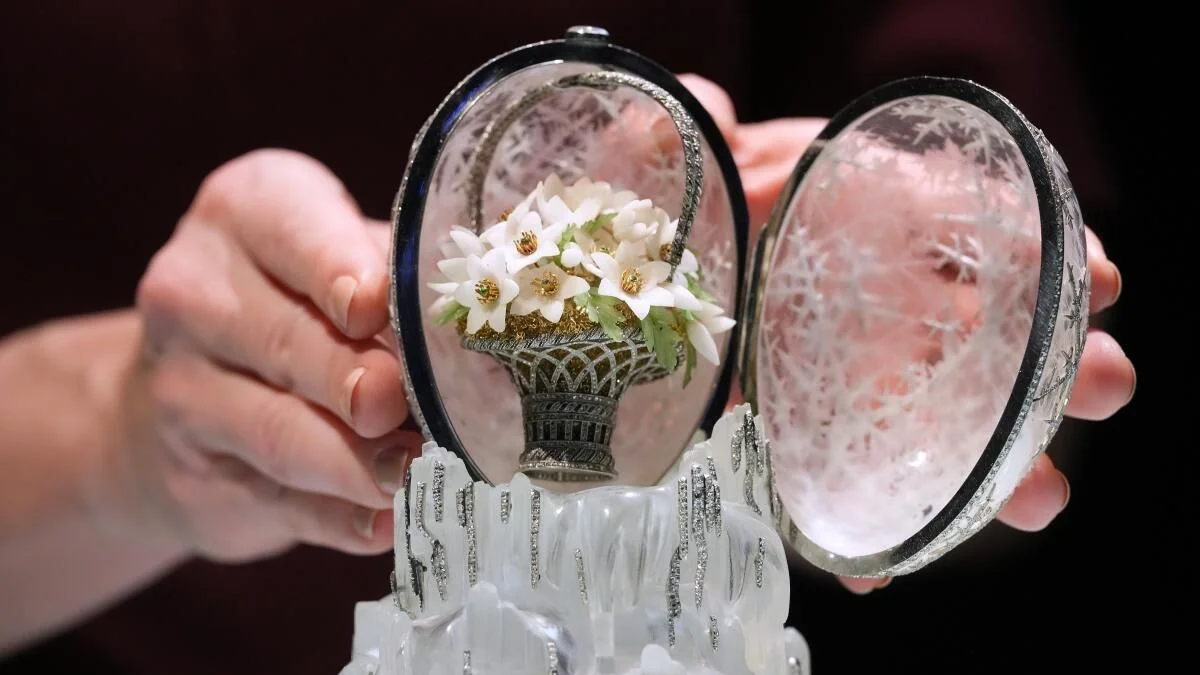A very rare Fabergé egg that once belonged to Russia’s royal family is going up for auction. Experts think it will sell for more than £20 million, which is about $26.4 million. This egg is called the Winter Egg and only seven eggs like this are still owned by private collectors. Christie’s in London will sell it on Tuesday.
The egg is tiny. It is only 4 inches tall. It is carved out of clear rock crystal. It looks like it is covered in snow because it has a soft snowflake design made from platinum and 4,500 diamonds. When you open it, there is a tiny basket inside. The basket holds small quartz flowers. These flowers stand for the arrival of spring.
The head of Christie’s Russian art department said the egg feels like a very fancy Kinder Surprise chocolate. She said it is so beautiful that it is like the Mona Lisa of decorative art. The designer of this egg was Alma Pihl. She was one of the only women who ever designed these famous eggs. Czar Nicholas II ordered this egg in 1913 as an Easter gift for his mother. Her other egg is now owned by the British royal family.
The Fabergé eggs became a tradition in the royal family. The company run by Peter Carl Fabergé made more than 50 eggs between 1885 and 1917. Each egg was different and each one had its own little surprise inside. Czar Alexander III started the custom by giving one to his wife every Easter. Later, Nicholas II gave eggs to both his wife and his mother.
The Romanov family ruled Russia for 300 years, but they lost power in the 1917 revolution. Nicholas and his family were killed in 1918. After the revolution, the new government sold many royal treasures. A dealer in London bought the Winter Egg for only £450 in the 1920s. After that, the egg passed through many owners. People even thought it was missing for about 20 years. It appeared again at a Christie’s auction in 1994, where it sold for more than 7 million Swiss francs. In 2002, it sold again for $9.6 million.
Now, experts believe it will sell for even more than the record $18.5 million paid in 2007 for another Fabergé egg. Only 43 of the original imperial eggs still exist today and most of them are kept safely in museums.

